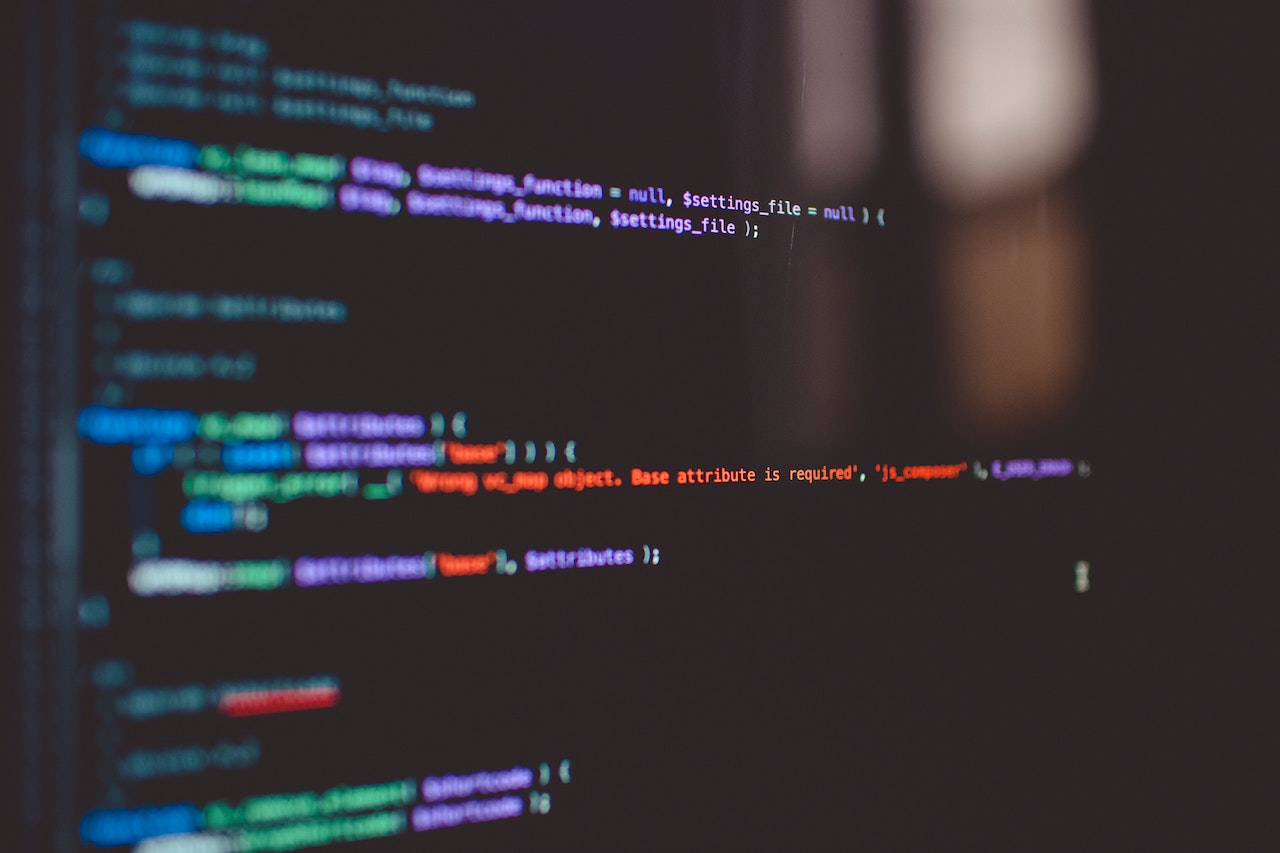How many programming languages are there? List of programming languages
Published

There is such a dizzying list of programming languages that we've all wondered: How many programming languages are there? There are an incredible number of programming languages used by software engineers, web developers, and other computer science professionals. In total there are around 9,000 computer languages.
Of the thousands of programming languages that exist, only 50 are among the most popular programming languages in use today. If you want to focus on the list of programming languages that are best for beginners, you can narrow it down even further: HTML, Ruby, Python, JavaScript, Java, C, and PHP.
How many computer languages are there? The short answer
There are about 700 programming languages, including esoteric programming languages. Some sources that list only known languages still come to the impressive number of 245 languages. Another list called HOPL, which claims to contain every programming language that has ever existed, puts the total number of different programming languages at 8,945.
List of programming languages
Instead of taking you through all the programming languages, we limited ourselves to a list of the 50 most important programming languages. The following list of programming languages includes both popular languages and languages that are historically significant or infamous for one reason or another. The programming languages on this list are used in mobile apps, machine learning, and game development.
- Python
- C++
- TypeScript
- Ruby
- Ada
- Cobol
- PowerShell
- LISP
- COBOL
- Erlang
- Java
- PHP
- MATLAB
- Scala
- Lua
- Julia
- SQL
- Ballerina
- Speakeasy
- Ada
- JavaScript
- R
- Kotlin
- Visual Basic
- Abap
- Haskell
- Clojure
- FORTRAN
- beginning
- Eiffel
- C#
- Objective-C
- To {Grow)
- Rust
- Groovy
- Delphi
- Elixir
- BASIC
- Smalltalk
- Rebol
- C
- Swift
- VBA
- Dart
- Perl
- Elm
- Pascal
- Alice
- Prolog
- Scratch
What is a coding language?
The first step in figuring out how many programming languages there are is to define the term "programming language." This is an important step when compiling a list of programming languages because, just like with human languages, it's sometimes hard to decide what's different enough to be its own language.
A common definition of a programming language is: "an artificial language designed to give instructions to a computer." Computers cannot understand English, Hindi or Chinese, and almost no human can understand binary, the base language of computers. So we need an intermediate form of communication that we call “programming languages”.
These languages are used to write programs, i.e. H. complete and functional sets of instructions that computers use to perform tasks such as loading a web page, performing statistical analysis, or finding the sum of two numbers.
Why are there so many programming languages?
Programming languages simplify the binary language of the computer. One reason there are so many programming languages is that you can distinguish how close a language is to binary compared to human language. There are high-level programming languages that are easier to use and low-level programming languages that are more difficult to use but allow more granular control over the computer.
Another reason why there are so many programming languages is that many programming languages are designed for a specific function. There are programming languages designed for controlling automatic factory machines, developing video games, or even teaching programming.
What about markup and query languages?
HTML is a markup language that allows a software developer to annotate content for display in a web browser. Most people don't consider it a programming language because it doesn't contain any real instructions and doesn't support basic features like conditional statements. It is not complex enough to be a general-purpose programming language.
SQL is a query language that allows you to structure a query for data from a database. Query languages work differently than standard programming or scripting languages like Python or JavaScript, but not so differently that they are typically excluded from a list of programming languages.
What about esoteric languages?
One of the strangest phenomena to emerge from the programming community is esoteric programming languages. These are entire languages based on jokes, obsessions and the desire to push the boundaries of technology. Esoteric programming languages are not used in everyday programming work, but are a hobby for dedicated programmers.
Binary Lambda Calculus is an esoteric programming language designed to be as dense as possible, with each program written to use as few characters as possible. Malbolge was designed to be as difficult as possible, with programs that are inherently self-modifying and with effects that depend on where an instruction is stored in a computer's memory.
Although esoteric programming languages are real programming languages, they are typically not included in lists of programming languages because they are not used in development. As you can see, finding a definition for a programming language can be difficult.
What are different programming languages used for?
Different programming languages are used for different types of computers. Most people think that computers are limited to desktops and laptops, but there is also a computer in your phone and in your car. There are also computers in spacecraft, entertainment systems in airplanes, robots at sea, and some kitchen appliances.
These different computer systems use different programming languages to handle a wide range of tasks. Programming languages are used for robots that care for the elderly, chatbots that handle customer service, and machine learning systems that can detect landmines, grow crops, solve protein folding problems, generate text, and recognize faces.
Most commonly used programming languages
If you're new to programming, it's easy to get lost in long lists of programming languages. You don't need to learn them all. You can spend your time learning just a few of the most commonly used programming languages. Even though the five most important programming languages are different in age, they are all important if you want to work as a developer.
JavaScript
JavaScript is one of the most important programming languages for web development. Combined with HTML, this programming language helps developers create interactive website features. Front-end web developers rely heavily on JavaScript because it works with all major web browsers. The syntax is easy to follow, and there are many online resources that can help new and experienced programmers.
JavaScript is so popular that developers are now using it to create desktop applications. You can use JavaScript with runtimes like Node.js to build applications with JavaScript functionality that don't require a browser. JavaScript is a great programming language to start with because it is one of the most commonly used programming languages and is easy to learn.
HTML
This programming language is one of the most commonly used programming languages for web development and it is easy to learn HTML. The abbreviation “HTML” stands for “Hypertext Markup Language,” and the language is used to format and arrange text in a document. Developers can use HTML to change the position, font, size, and color properties of text.
The basics of HTML coding are relatively simple because HTML is a static coding language. This means that the commands cannot be changed while the program is running. HTML is used by both beginners and experienced programmers, making it one of the most commonly used programming languages.
C/C++
C and C++ are older programming languages that date back to the 1970s. Despite their age, these languages are very useful. Software engineers use C-based code to create computer programs, and developers use this versatile programming language to create a variety of products, from simple software to entire operating systems.
Many modern programming languages have their roots in C, so learning this fundamental language can help you better understand many of the most commonly used programming languages. One of the most popular C derivatives is even the next language on our list.
Java
Our next popular programming language is a member of the C/C++ family. Java has dominated software development for decades and is still one of the most widely used programming languages for desktop and mobile applications.
This programming language is so popular because of its universal usability. Developers can write code in Java for virtually any device. Java is a great language to master early in your career because it is so versatile. It is a proven general-purpose programming language with numerous online resources for beginners.
Python
Like Java, Python is also an excellent general-purpose programming language. It is an open source development tool based on the popular Django platform. This versatile code is suitable for simple projects as well as entire software programs. Python can be found in many places, but especially in backend applications that require interaction with servers and databases.
Of all the languages on this list, Python is probably the most user-friendly. Python is a natural programming language that is easy to learn because it is designed to resemble a spoken language. Python is one of the most widely used programming languages and a recommended starting point for anyone looking to learn their first programming language.
Ruby
Like Python, Ruby is a dynamic, general-purpose coding language. It is widely used in web development due to the excellent Ruby on Rails platform, which allows developers to easily design and manage individual website features. It is more beginner-friendly due to its dynamic typing features.
PHP
PHP stands for Hypertext Preprocessor. It is one of the most popular web development languages in the world. Over 80 percent of websites today use PHP. PHP is used for a variety of website functions such as: B. for cookies and data management.
Developers also use PHP as a tool to create complex and interactive website functionality for static and dynamic websites. Programmers often learn this language after HTML and JavaScript to add an additional layer of functionality to their web designs. While PHP is not as universal as other web development languages, it is still an excellent tool for compatible systems.
Swift
Do you prefer Apple products to PC? If so, you may have wondered what programming languages Apple developers like to use. Apple devices run their own operating systems that are largely incompatible with external devices. It's easier to use an Apple language than to try to force another language to work on macOS. The most commonly used programming language for Apple is Swift.
How many programming languages are there?
How many programming languages are there actually? That really depends on who you ask. The most widely accepted source is Wikipedia's list of 700 languages. However, it is important to know that according to the Tiobe Index, only the 50 most popular languages are in use today.
Given the rapid development of new languages, no one can give an exact total number of programming languages. The picture becomes even blurrier when esoteric languages are taken into account. There are certainly a variety of programming languages, but you can build a solid career by mastering some of the most popular programming languages.
Which programming languages should I learn?
If you want a career in tech, this is an important question. The good news is that you don't need to learn every programming language, and you don't even need to know how many programming languages there are. You should only learn one or two programming languages to start a career.
Once you become a seasoned professional, you will need to know a few programming languages, but the number depends on the technical area you want to work in. For example, front-end developers should learn at least two programming languages, HTML and JavaScript. Data scientists should learn three programming languages: Python, R and SQL.
What was the first computer programming language?
The first computer programming language was Assembly, developed in 1949. However, more than half a century earlier, Ada Lovelace wrote an algorithm for her mechanical computer that many historians consider to be the first computer program.
Who uses programming languages?
There are a variety of technical professionals who use programming languages, from web developers to data scientists. Other careers that use programming languages include business analysts, app developers, agricultural scientists, operations research analysts, and web designers.
How many programming languages should I learn to get a job?
It's a good idea to learn two programming languages to get a job. The good news is that it's much easier to learn a second programming language once you learn it. You don't necessarily have to be an expert in more than one language, but listing programming knowledge in more than one programming language on your resume will help you get a job.
How do different programming languages work together?
Developers sometimes create software in multiple programming languages. Typically they use a low-level language to create backend modules and a high-level language for user interface modules. The way these programming languages work together is that the main program contains a command to execute one or more scripts written in the other programming language(s).







